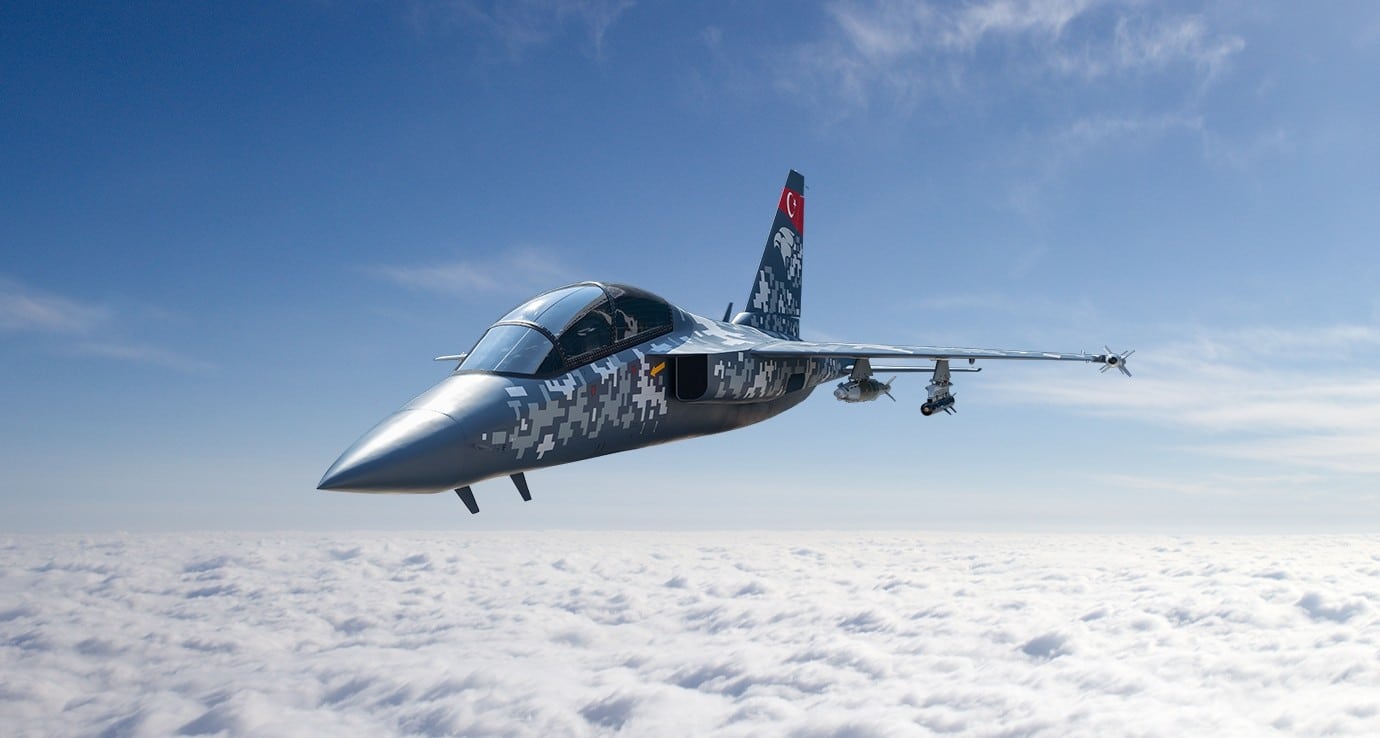Aerospace
Things to know about Turkey built Hürjet for Malaysia.

Hürjet is a single-engine, tandem-seat supersonic advanced trainer and light combat aircraft being developed by Turkish Aerospace Industries. In the fourth quarter of 2022, it is likely to take off.
Let us take a closer look at Hürjet.
The company began the project in August 2017 using its own funds. Turkey is apparently going forward with the Hürjet light attack aircraft’s initial phase of mass manufacturing in 2022. Sierra Nevada firms in the United States are claimed to be supporting the effort.
The aircraft will be capable of air-to-air refueling, fly-by-wire with parameter limiting, a built-in auxiliary power unit, a night vision goggle-compatible cockpit, a head-up display, and an integrated helmet display system.
The company already designed simulator avionics, flight control systems, displays, cockpits, and communication systems.
The Turkish Force intends to use the design to replace the Northrop T-38 Talon in the trainer role and also to supplement the General Dynamics F-16 Fighting Falcon for close air support.
The aircraft is also planned to replace the Northrop F-5 used by the Turkish Stars aerobatic team. A naval version of the aircraft may also be developed. The company also plans to pursue export orders to countries looking to replace older trainer and ground attack aircraft.
Turkey has invited Malaysia to join the Hürjet project, in the role of producing some parts for the aircraft.
Specifications
-
- Crew: one
- Length: 13 m (42 ft 8 in)
- Wingspan: 9.8 m (32 ft 2 in)
- Height: 4.2 m (13 ft 9 in)
- Wing area: 24 m2 (260 sq ft)
- Powerplant: 1 × F404-GE-102 afterburning turbofan, 79 kN (17,700 lbf) thrust 1
Performance
- Maximum speed: Mach 1.4
- Range: 2,222 km (1,381 mi, 1,200 nmi)
- Service ceiling: 13,716 m (45,000 ft)
- g limits: +8/-3 g
- Rate of climb: 200 m/s (39,000 ft/min)
Hürjet may equipped with locally designed ammunition such as CIRIT, TEBER, HGK, and LGK. It can also utilize GPS-guided bombs, conventional bombs, non-guided rockets, and machine guns, as per the inertial navigation system.
Armored body sections, a self-protection system, a data link, laser tacking, an electro-optical and infrared pod, an external fuel tank, and advanced avionics are all included in the armed Hürjet.
The Hürjet can execute light-attack and armed reconnaissance missions with a 3,000-kilogram payload that can be employed through seven external hard points.
JM Exclusive tour onboard the EMBRAER E195-E2 Demonstrator.
When it comes to Tejas, it features eight hardpoints that can carry a variety of weaponry such as the S-8 rocket, R-73, I Derby, Python, Kh-59ME, Kh 59M, 59 L, and 59T missiles. AAS-Hammer. Kh-35 and 59Mk are two variants of the Kh-35.
Turkey is Interested to build 2nd Antonov An225 Mriya commercial jet
It can also transport precision-guided weapons such as the Spice, JDAM, DRDO SAAW, Laser guided bomb, cluster munition, and unguided bomb. There are many more.
The Hurjet is estimated to cost roughly $50 million per fighter.
Boom Supersonic to Roll Out Historic XB-1 Demonstrator Oct. 7

Aerospace
Boeing Transfers Rocket Stage to NASA, Paving Way for Human Moon Mission

Boeing has achieved a significant milestone by providing NASA with the second core stage of the Space Launch System (SLS) rocket.
This crucial component, crafted at NASA’s Michoud Assembly Facility (MAF), is set to propel the Artemis II crew into lunar orbit, marking humanity’s return to deep space after a 50-year hiatus.
The monumental Boeing-built rocket stage, the largest element of the Artemis II mission, will embark on a journey aboard the Pegasus barge, traveling 900 miles to NASA’s Kennedy Space Center.
Comparison of two legendary aircraft B777x vs B747 aircraft:Click here
Upon arrival, it will be meticulously integrated with other essential Artemis II components, including the upper stage, solid rocket boosters, and NASA’s Orion spacecraft within the iconic Vehicle Assembly Building. This intricate integration process is a vital step toward the eagerly anticipated Artemis II launch, slated for 2025.
“Boeing-built products helped land humankind on the moon in 1969, and we’re proud to continue that legacy through the Artemis generation,” remarked Dave Dutcher, vice president and program manager for Boeing’s SLS program. “Together, with NASA and our industry partners and suppliers, we are building the world’s most capable rocket and paving the way to deep space through America’s rocket factory in New Orleans.”
NASA, Lockheed Martin Reveal X-59 Quiet Supersonic Aircraft:Click here
The delivery of Core Stage 2 marks a significant achievement in the evolution of the SLS rocket. Towering over 200 feet and powered by four RS-25 engines, this core stage, coupled with two solid-fueled booster rockets, will generate a staggering 8.8 million pounds of thrust. This immense power is crucial to launching Artemis II and future missions into the vast expanse of space.
The SLS rocket stands unparalleled in its capability to transport both crew and substantial cargo to the moon and beyond in a single launch. Its extraordinary capacity will facilitate the delivery of human-rated spacecraft, habitats, and scientific missions to destinations including the moon and Mars, ushering in a new era of space exploration.
-

 Travel1 week ago
Travel1 week agoAir India to Expand US Operations with Three New Routes After a Decade
-

 Travel2 weeks ago
Travel2 weeks agoWhy We Should Avoid These Stamps in a Passport
-

 Airlines1 month ago
Airlines1 month agoInvestigations Reveal Fake Chinese Titanium in Boeing and Airbus Jets
-

 Tech4 weeks ago
Tech4 weeks agoChina’s CATL Plans 1,800-Mile Electric Plane Launch by 2027
-

 Airport3 days ago
Airport3 days agoTop 10 Largest Airports in the World by Size
-

 Aerospace4 weeks ago
Aerospace4 weeks agoChina’s Fighter Jets Turn Wings into Autonomous Drones
-

 Airlines4 days ago
Airlines4 days agoAir India Rolls Out A350s for Delhi-New York JFK and Newark Routes
-

 Defence3 weeks ago
Defence3 weeks agoBoeing Enhances Chinook with New Engines and Block II Upgrades at $96 Million







